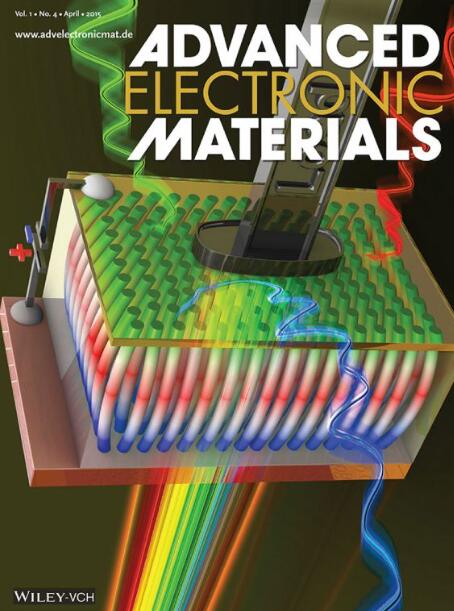Chiral Magnetic Memory Device at the 10 Nm Scale Using Self-Assembly Nano Floret Electrodes
IF 5.3
2区 材料科学
Q2 MATERIALS SCIENCE, MULTIDISCIPLINARY
引用次数: 0
Abstract
As data storage demands increase, the need for highly dense memory solutions becomes crucial. Magnetic nanostructures offer a pathway to achieve dense memory devices, but standard magnetic memory bit sizes are limited to over 50 nm due to fundamental ferromagnetic properties. In this study, a 10 nm chiral magnetic memory device is introduced using a self-assembly gold nano-floret device. The device is composed of a SiGe nanowire with a selectively decorated gold metallic shell deposited at the nanowire tip. The tip with the thiol linkers functions as a weak ferromagnet particle that is stabilized by the chiral ligands. The nano-floret functions as a high geometrical aspect ratio electrode measuring 30–60 nm in diameter and 1–10 microns in length. The mechanical contact of the Au with a counter Ti electrode forms a nanojunction that can be probed electrically, bridging the gap between the nanoscale and the microscale. In this junction, chiral molecules are adsorbed together with 10 nm super-paramagnetic iron oxide nanoparticles (SPIONs) forming a magnetic memory device. The same device provides valuable insights into the chiral monolayer properties on selected metal surfaces demonstrating a new approach for characterizing the molecular tilt angle in monolayers of chiral molecules.

基于自组装纳米小花电极的10纳米级手性磁记忆器件
随着数据存储需求的增加,对高密度内存解决方案的需求变得至关重要。磁性纳米结构为实现致密存储器件提供了一条途径,但由于基本的铁磁性,标准的磁性存储位大小限制在50纳米以上。本研究采用自组装金纳米小花器件设计了一种10 nm的手性磁记忆器件。该装置由SiGe纳米线组成,纳米线尖端沉积有选择性装饰的金金属壳。带有巯基连接体的尖端作为弱铁磁体粒子,由手性配体稳定。纳米小花作为一个高几何宽高比电极,直径为30-60 nm,长度为1-10微米。金与反钛电极的机械接触形成了可以电探测的纳米结,弥合了纳米尺度和微尺度之间的差距。在这个连接处,手性分子与10纳米超顺磁性氧化铁纳米颗粒(SPIONs)吸附在一起,形成磁记忆器件。该装置对选定金属表面上的手性单层性质提供了有价值的见解,展示了表征手性分子单层分子倾斜角的新方法。
本文章由计算机程序翻译,如有差异,请以英文原文为准。
求助全文
约1分钟内获得全文
求助全文
来源期刊

Advanced Electronic Materials
NANOSCIENCE & NANOTECHNOLOGYMATERIALS SCIE-MATERIALS SCIENCE, MULTIDISCIPLINARY
CiteScore
11.00
自引率
3.20%
发文量
433
期刊介绍:
Advanced Electronic Materials is an interdisciplinary forum for peer-reviewed, high-quality, high-impact research in the fields of materials science, physics, and engineering of electronic and magnetic materials. It includes research on physics and physical properties of electronic and magnetic materials, spintronics, electronics, device physics and engineering, micro- and nano-electromechanical systems, and organic electronics, in addition to fundamental research.
 求助内容:
求助内容: 应助结果提醒方式:
应助结果提醒方式:


